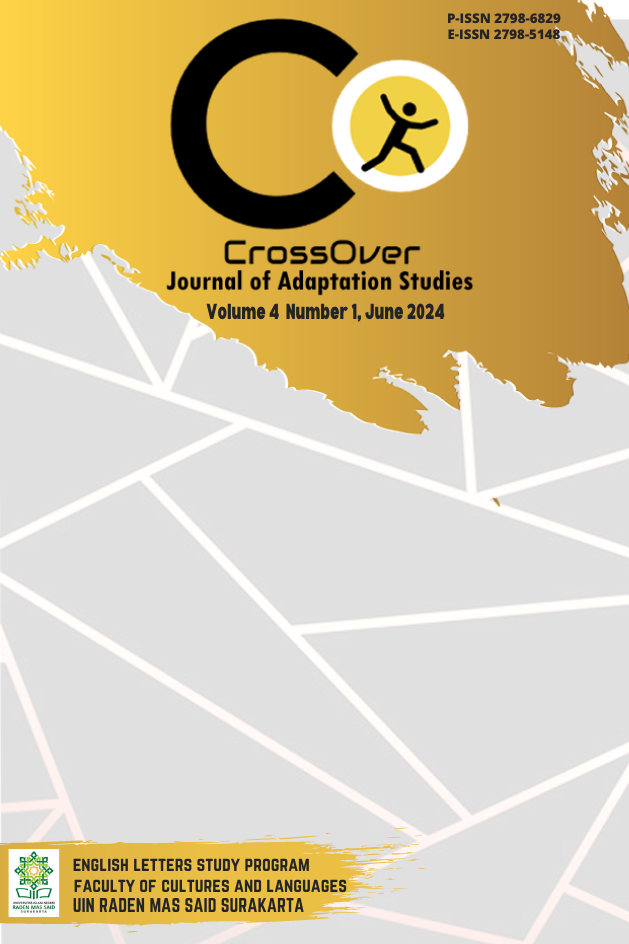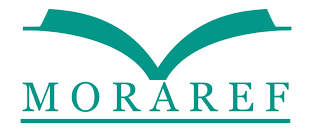COMPARATIVE ANALYSIS BETWEEN THE NOVEL AND FILM LORD OF THE FLIES USING ENESTE’S ECRANISATION THEORY
DOI:
https://doi.org/10.22515/crossover.v4i1.6451Keywords:
Ecranisation, Lord of the Flies (1954) novel, adaptation, Lord of the Flies (1990) filmAbstract
Ecranisation is a process of finding out the difference between a novel and a film. One of the novels that has been adapted into a film is Lord of the Flies. Furthermore, this research aims to reveal the process of ecranisation between the novel Lord of the Flies (1954) and its film adaptation Lord of the Flies (1990) by William Golding. How are the differences between the novel Lord of the Flies (1954) and its film adaptation Lord of the Flies (1990). In analyzing, the writers use the theory of Ecranisation (1991) from Pamusuk Eneste which is divided into three processes, namely reduction, addition and variation. This research used a descriptive qualitative approach aimed at describing the phenomenon and its characteristics. The data is collected qualitatively by examining them throughout to get relevant issues and ideas and classify them. The results of the analysis reveal that in the film Lord of the Flies (1990), there is a narrowing and expansion of the original storyline, namely the novel Lord of the Flies (1954). This is because it does not take much time when presenting the story of the novel. The writers finds that the ecranisation process that occurs in Lord of the Flies does not change the core of the story, but only refine and beautify the story's fabric.
Key words: Ecranisation, Eneste, Lord of the Flies (1954) novel, Lord of the Flies (1990) film
Downloads
References
Altenbernd, L., & Lewis, L. L. (1966). A Handbook for the Study of Fiction. Macmillan.
Creswell, J. W. (2014). Research design: Qualitative, quantitative, and mixed methods approaches. Sage publications.
Eneste, P. (1991). Novel dan film. Nusa Indah.
Ernest, Y. K., & Nurgiyantoro, B. (2018). Kajian Ekranisasi: Dari Novel Pintu Terlarang Ke Film Pintu Terlarang. Diksi, 26(2), 120-127.
Hutcheon, L. (2006). A theory of adaptation. Routledge.
Isnainah, S. (2021). Ekraanisasi Dalam Penelitian Sastra. Yogyakarta.
Javandalasta, P. (2011). 5 Hari Mahir Bikin Film. Java Pustaka Group.
Lord of the Flies 1990. (n.d). Box Office Mojo. Retrieved June 25, 2024, from https://www.boxofficemojo.com/title/tt0100054/?ref_=bo_tt_ti
Miles M. B. & Huberman A. M. (1994). Qualitative Data Analysis. Sage Publications
Ratna, N. K. (2004). Teori, Metode, dan Teknik Penelitian Sastra. Pustaka Pelajar
Somers, J. (2020). 'Lord of the Flies' Summary William Golding's novel reveals the savagery of human nature. Retrieved from https://www.thoughtco.com/lord-of-the-flies-summary-4178764#:~:text=William%20Golding's%201954%20novel%20%22Lord,eventually%20become%20violent%20and%20brutal.
Stanley, J. B. (2012). Pengantar Komunikasi Massa Literasi Media dan Budaya (terjemahan). Salemba Humanika.
Strauss, A., & Corbin, J. M. (1997). Grounded theory in practice. Sage.
Susanto, D. (2012). Pengantar Teori Sastra. PT. Buku Seru.
Triswela, Y. (2017). Ecranisation of plot in the novel and film of breaking dawn by stephanie meyer. Journal of Language and Literature, 4(1), https://ejournal.gunadarma.ac.id/index.php/sastra/article/view/1566.
Widhayani, A., Suwandi, S., & Winarni, R. (2018). From novel to film Dilan 1990: an ecranisation study. Humanus: Jurnal Ilmiah Ilmu-Ilmu Humaniora, 17 (2), https://doi.org/10.24036/humanus.v17i2.100389.
Wilkinson, D. (2000). The researcher's toolkit: the complete guide to practitioner research. Taylor & Francis.
Downloads
Published
How to Cite
Issue
Section
Citation Check
License
Copyright (c) 2024 Asyida Hayati Shofa, Nurul Fatimah, Noviana Romadloni Widyaningrum

This work is licensed under a Creative Commons Attribution-ShareAlike 4.0 International License.
Authors retain copyright and grant the journal right of first publication with the work simultaneously licensed under a Creative Commons Attribution 4.0 International License that allows others to share the work with an acknowledgment of the work's authorship and initial publication in this journal.

















